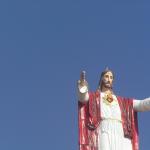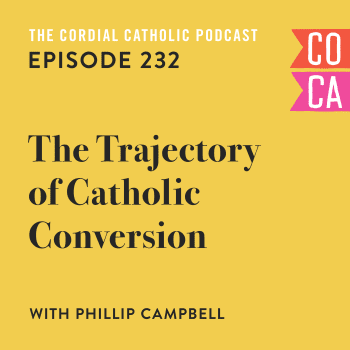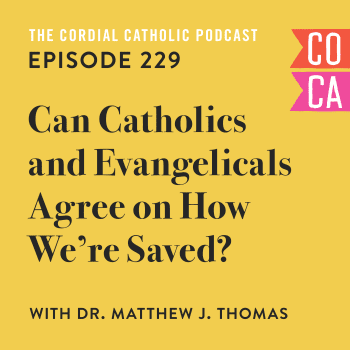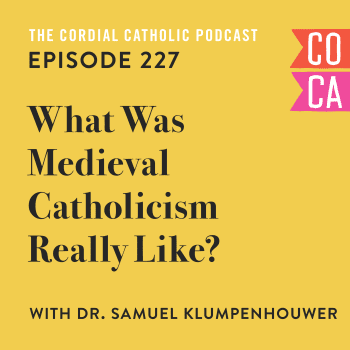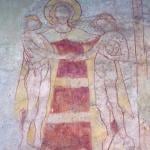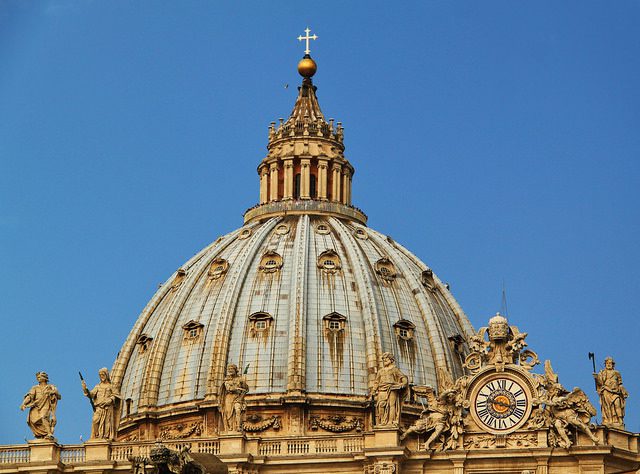
Way back at Christmastime, just after our second child was born, I perfected the art of bouncing a baby on an exercise ball while reading a book. Admittedly, it’s a skill I’m pretty proud of. With our older offspring happily spending the day at preschool I had a lot of time to help out at home during those first two weeks and between the baby eating, sleeping, and pooping there was the bouncing—and a lot of bouncing. And, in turn, a lot of reading. I think I must’ve finished five or six books in that two week stretch of life and one of the books I picked up and couldn’t put down covered the hunt for the bones of St. Peter. A historical text, written by a veteran journalist, which covered the quest to find the final resting place of the chief apostle, long believed to be the location where the formidable St. Peter’s Basilica was eventually built in Rome.
(No, the name is not a coincidence.)
Surprising, for what should’ve been a rather dry and scientific text, was just how many twists, turns, and interesting insights the book afforded into not only the search for the apostle’s bones but of the history of the early Christian Church. It was truly a page-turner and its remarkable conclusion, which was also the conclusion of Pope Paul VI in the late 1960’s, was that the bones of St. Peter were located right where they were thought to be: underneath the main altar of St. Peter’s Basilica—where they had been for almost two thousand years.
That St. Peter’s Basilica was built over the bones of St. Peter.
A truly incredible claim and, finally, supported by hard science.
It was pretty amazing indeed.
But the implications of being able to prove that such a monumental church was built over the historical burial ground of the chief apostle are, in my opinion, equally incredible to consider.
For much of my life as a Christian I remained blissfully ignorant of the history of the Christian Church. In the strain of Evangelical Christianity that I converted to in high school Church History was rather flatly ignored. I’ve heard other Evangelicals describe it as if we believed the Bible had been compiled together and handed to us—with nothing in between. As if Christianity remained completely stagnant when the last apostle died up until I, myself, became a Christian.
It was a very self-centred kind of perspective and to be sure, a pretty bizarre way of understanding the faith.
When I began to take an interest in the history of Christianity, when I started to read about the Early Church, the Dark Ages, and the Reformation, I was pretty shocked by what I learned. And pretty perplexed. The Christianity represented by Christians from the beginning of the faith through to the Middle Ages and up until the Reformation looked starkly different than my Protestant Evangelical system of beliefs and practices.
It was a faith of tangible things called the sacraments; a faith which believed that Jesus came to give us grace through actual, physical things. Things we can touch and feel because this is how human work (and God knows that best). This is why Jesus rubbed mud in the eyes of a blind man, why he turned water into wine, and why he made bread and then told us that we must eat him, too.
It was a faith of men and women called the saints; a faith which honoured those that came before us, that held them up like glass or a mirror or an open window for light to pour through. Like those towering saints from the Old Testament: Abraham, Moses, and David. Like Ruth. A faith that saw the value of elevating such divine examples of the Christian life.
And St. Peter, perhaps one of the best examples of all.
One of the most profound implications of the discovery of St. Peter’s bones beneath the altar of the Basilica in Rome is what it tells us about the Early Christian Church, and Christians today.
According to the earliest accounts from Rome we know, from the beginning, that the first Christians were drawn in flocks to the burial place of St. Peter. The accounts are incredible. In secret, we’re told, Christians would be informed of the location of the apostle’s bones. If word got out to the pagan Roman authorities the bones would surely be destroyed and anyone found therein would be killed, so the secret was tightly kept. But Christians who were let in on the location would visit, often bringing with them a piece of cloth, a handkerchief, or a scrap of clothing which they would lower down into the chamber where the bones were laid. The cloth, lowered down on a rope or string, would be touched to the bones of St. Peter in hopes that it would be infused with some sort of grace—some sort of healing power—which could then be brought out to fledgling Christian communities that were then spreading across Europe, North Africa, and the Middle East.
If the account of touching a handkerchief to an apostle sounds familiar you’re thinking of Acts 19:12 which records handkerchiefs, aprons, and other pieces of cloth being touched to St. Paul and receiving similarly miraculous properties.
(This is not, after all, out of the realm of biblical possibilities.)
And this was the Christian Church in its infancy; these were the first Christians. And what I find most profound is that this practice was so not something out of the ordinary. Like those first believers touching St. Paul’s clothing. This was nominal Christianity. This is what everyone did.
And to early Christians, as with Catholics today, it didn’t seem to matter if a figure of the faith like St. Peter was dead or alive. When speaking of the Christian dead many of the Early Church Fathers write with authority of the power of Christ to conquer death; to tear the veil between living Christians and dead ones. And of course they’d write with such force when this was such a nominal practice. When the first Christians travelled under the most dangerous circumstances just to touch a piece of cloth to the bones of an apostle.
The implications are profound because Catholics argue, vibrantly, for the importance of the physical dimension of our faith. That God created us to touch and feel—as tactile beings—and that our faith should reflect that with the smells and bells, with the physical ups and downs, and with our devotion to bizarre things like pieces of the saints.
The bones of St. Peter, buried beneath the epicentre of Catholic Christianity, profoundly demonstrate that from the very beginning Christians valued the closeness of the saints, the Christ-led triumph over death, and the immediate physicality of our faith.
This should be underscored.
As an Evangelical Christian this history, with such profound implications, was entirely lost to me. I did not know that these beliefs—this physical dimension of faith—was so crucial to the development of Christianity. And, ultimately, it’s not about being right or wrong in how we practice our faith, it’s about what was lost. What Luther, Zwingli, Calvin, and the other Reformers jettisoned in the Reformation, and what was then lost to me as a Protestant, wasn’t pious medieval invention, it wasn’t something which got in the way of my faith by placing stuff in front of Christ, it was Christianity as it had been from the beginning when the very first believers lowered little pieces of cloth through a whole in the ground, touching them to the bones of the Apostle Peter.

